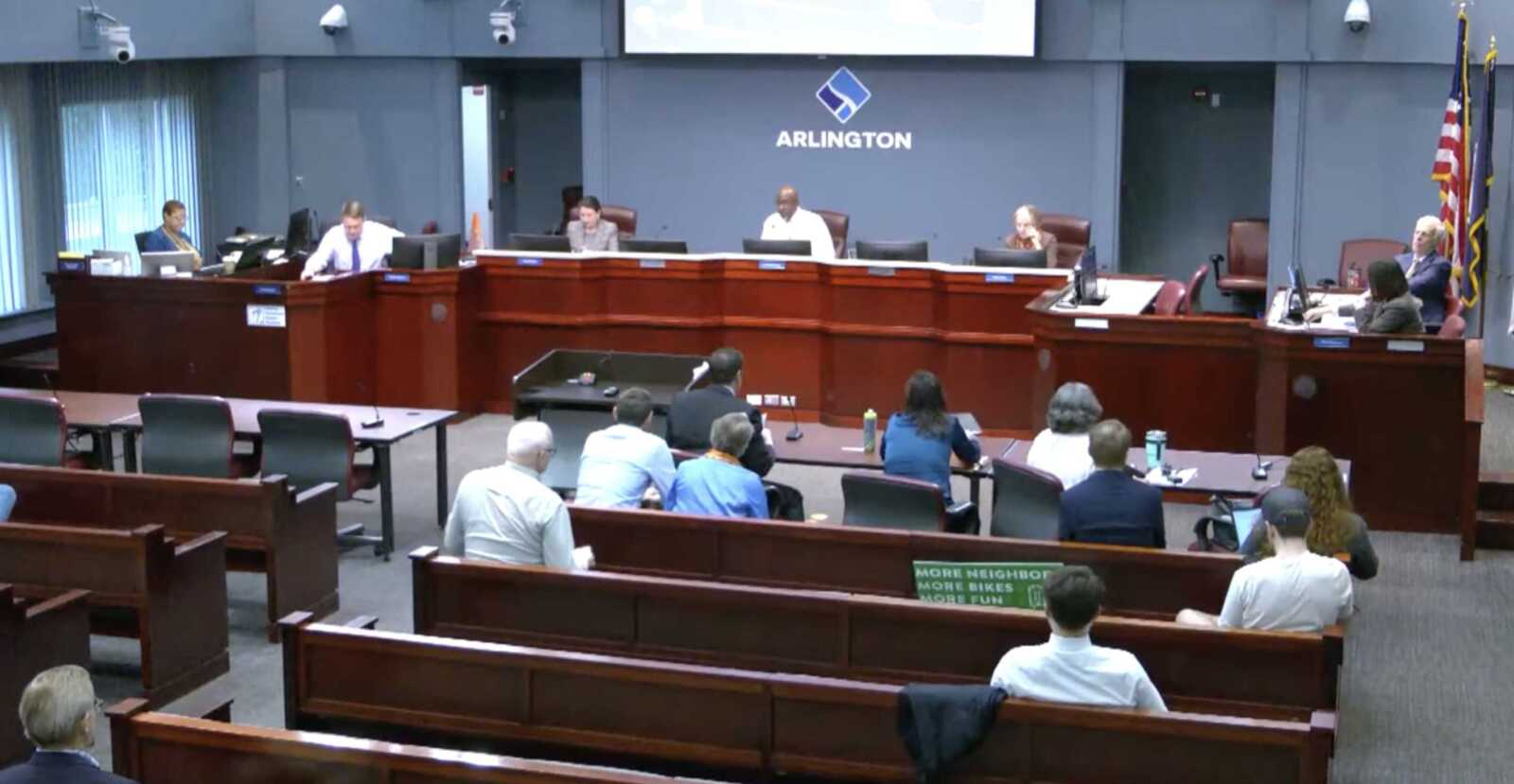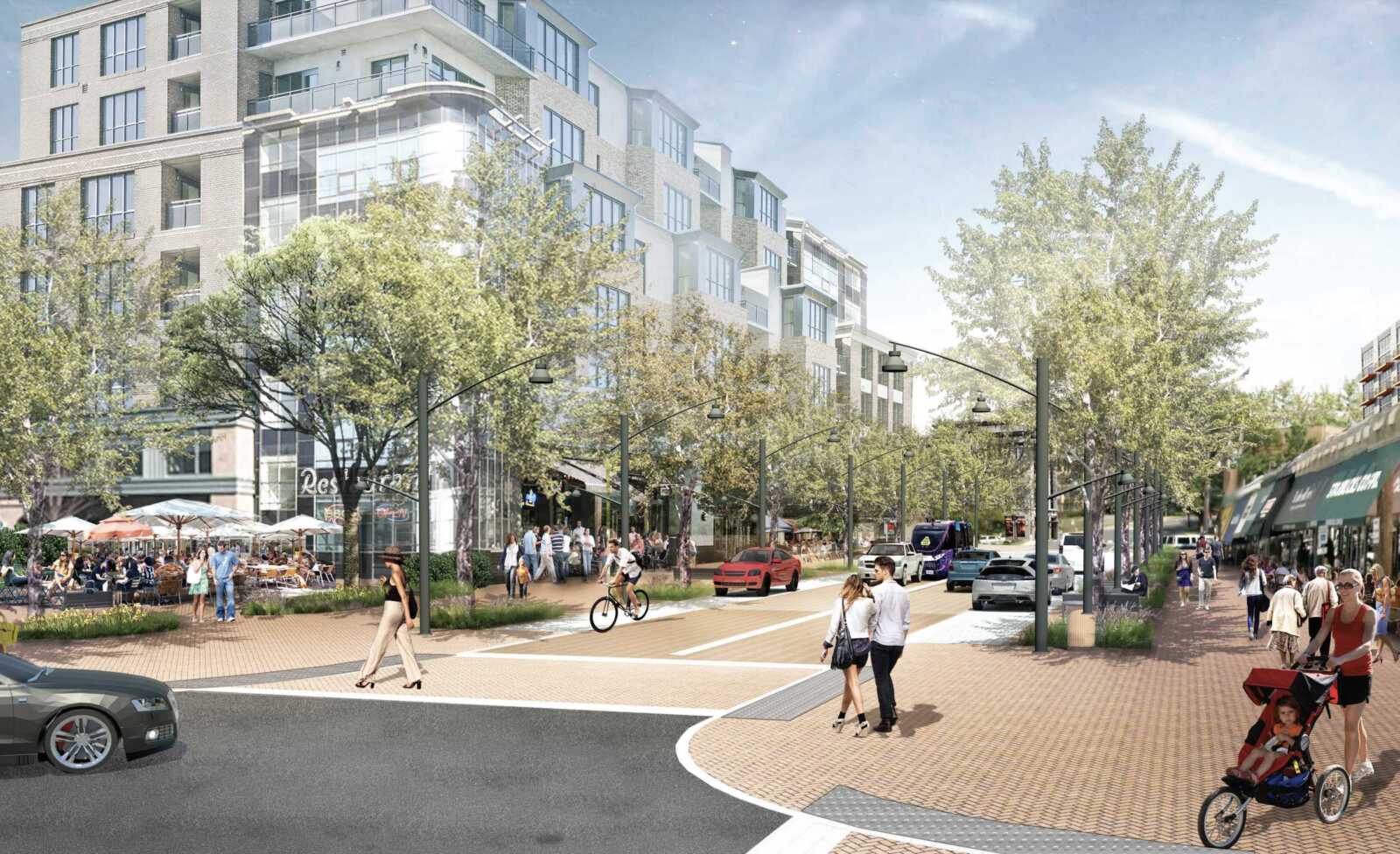
A document envisioning the long-term development of most of Langston Blvd is one step closer to adoption.
On Saturday, the Arlington County Board set public hearings by the Planning Commission on Monday, Oct. 30 and the Board on Saturday, Nov. 11, when members will hear from the community and deliberate the document, dubbed Plan Langston Blvd. The Board will ultimately decide whether to adopt it.
Board members unanimously approved the request to advertise hearings next month after nearly 50 people spoke and the Board asked questions for about an hour and a half.

Board member Matt de Ferranti proposed and received majority support for two revisions before the final document was passed. One is intended to hasten a review of planning for the East Falls Church and Cherrydale neighborhoods and the other removes language calling for the consolidation of community centers.
East Falls Church and Cherrydale were excluded from Plan Langston Blvd because they already have neighborhood plans that have yet to be fully realized. Since this decision was made, however, some community members, Planning Commissioners and County Board members have stressed these communities need a second look — sooner rather than later — as they can help the plan meet its own affordable housing goals.
“This is a burning priority for me and so, this almost rises to level of office vacancy rate for me,” de Ferranti said, acknowledging that in the case of East Falls Church the county will have to keep applying pressure to VDOT and Metro while relying on private developers, too.
“What you see here is an attempt to signal to the community that these two parts of the plan should be considered sooner,” de Ferranti said.
County Manager Mark Schwartz said he will “never say no to the Board” on a request like this but it will require them to reconsider how county staffers prioritize their work.
“I’m working right now on [a budget]… that’s going to have cuts in it. I’m not going to have additional resources available. The team available here, once they finish up with this, they have two to three things to turn their attention to,” he said. “If you want to find additional resources, absolutely, we will move it higher up on the list, but that means something has to move lower on the list.”
The plan’s most recent iteration said community centers should be consolidated to better address the needs of a growing population, a goal espoused in the county’s Public Spaces Master Plan.
De Ferranti, however, argued that the goal is not in the county’s best interest because of the expected population increase. The lone dissenter to de Ferranti’s motion, Board Chair Christian Dorsey, countered that consolidation will not mean a reduction in services.
Much of the Board’s discussion this weekend, like previous discussions by the Board and the Planning Commission, as well as some community advocacy, centered on affordable housing.
The corridor currently has 1,936 market-rate and committed affordable units, said county planner Natasha Alfonso-Ahmed. That includes 1,088 that are affordable to people earning 80% of the area median income (AMI) and 900 are affordable at 60% AMI.
The plan aims to increase the number of affordable units to 3,200-3,800 units by 2075, focusing especially on units affordable up to 60% AMI. Some argue the county does not have the tools to get there nor does this plan consider people who earn 30% AMI or less.
“Many of these low-income residents provide our community with essential services — child and health care, restaurants and retail, maintenance and construction and more,” wrote Anne Vor der Bruegge, the director of grants and initiatives at the nonprofit Arlington Community Foundation, which has also advocated for deeper affordable housing elsewhere in the county.
“If we want to create a truly equitable Langston Boulevard corridor for the future, we need to proactively support creating and preserving homes that serve the lowest income residents,” she said.
Last week, the Planning Commission recommended the county propose “actions and strategies for preserving and supporting construction of affordable housing within the corridor” and evaluate whether new development will produce more units than the market-rate affordable housing expected to be lost to this construction, per a county report.
While the Board did not officially direct staff to do this on Saturday, some members agreed with the sentiment.
“I think we all want to do what we can for affordable housing,” Vice-Chair Libby Garvey said. “The more we can figure out some tools, and continue to work on getting better tools and continue monitoring, that will get us closer to our goals.”
Were the county to rely on existing mechanisms — which reward developers who add affordable units by letting them build taller, denser buildings — interim Board member Tannia Talento said this would not produce the number of units the plan envisions.
When the county emerges from an expected budget-cutting era, she said future Boards should improve affordable housing tools.
“I do agree with a lot of the advocacy on developing tools for actually understanding how we can really realize those goals, versus just what we’re using today,” she said. “It’s not enough. We’re not going to be able to do it with [existing tools].”
Overall, Board members were complimentary of the Langston Blvd plan.
“Staff tried to offer something that provided an incentive to private property owners to redevelop at a scale that is compatible with the built environment and in accordance with existing county policies and also providing substantial enough value so there are community benefits that meet our countywide priorities,” Dorsey said. “It’s a pretty hard thing to do when you think about it.”

